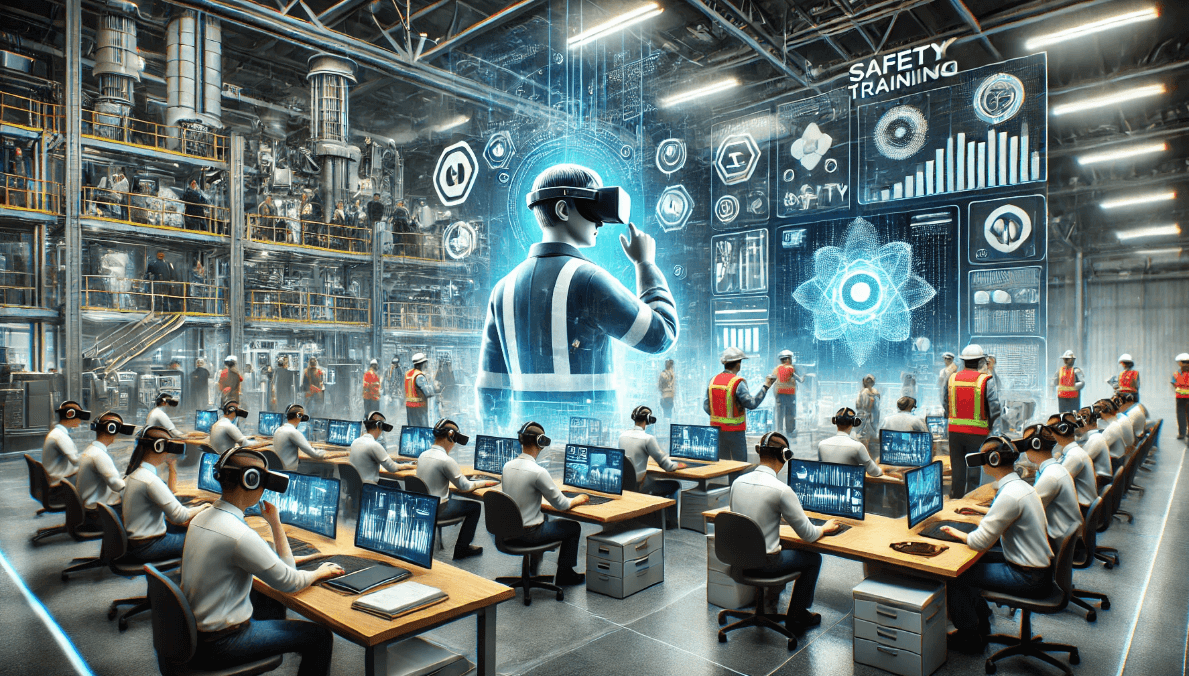In an era where next-generation technology reshapes every facet of our lives, its impact on workplace safety training cannot be overstated. Innovations such as virtual reality (VR) and artificial intelligence (AI) are at the forefront, transforming traditional approaches to occupational health and safety training and situational awareness. These advancements promise not only to enhance the efficacy of safety training for employees but also to revolutionize how organizations address incident reporting and risk assessment. Embracing these technologies not only elevates the standard of osha training but sets a new benchmark in proactive safety measures, underscoring the critical importance of integrating next-generation technology in cultivating a culture of safety across industries.
As this article unfolds, it will delve into the various ways next generation technology is redefining employee safety training practices. From the immersive experiences afforded by virtual reality that simulate real-life hazards without the real-world risks, to the predictive analytics and tailored learning experiences powered by artificial intelligence, the scope of innovation is broad. Additionally, the discussion will extend to holistic health and safety courses that leverage technology to promote physical and mental well-being in the workplace, along with the role of technology in advancing environmental sustainability within safety practices. With a focus on these pivotal areas, the article aims to provide a comprehensive overview of how next-generation technology is setting new precedents for osha certification, ensuring preparedness and resilience in an ever-changing world.
Next-Gen Technologies in Safety Training
In the realm of industrial safety training, the introduction of next-generation technologies such as virtual reality (VR) and artificial intelligence (AI) has significantly altered traditional methodologies. These technologies offer immersive and interactive experiences that are crucial in simulating real-life scenarios without the inherent risks, thereby enhancing both situational awareness and incident response capabilities.
Types of Technologies
Virtual reality technology immerses trainees in a 3D environment where they can interact with realistic scenarios. This type of osha training online is particularly effective in hazardous industries where real-life training can be risky or impractical. Artificial intelligence enhances this experience by adapting scenarios to the trainee’s behavior, providing personalized learning experiences that are more engaging and effective.
Benefits to Training Programs
The integration of these technologies into safety training courses offers numerous benefits. Firstly, they allow for repeated exposure to critical situations, enabling workers to practice their responses until they become second nature. Additionally, AI-driven analytics can assess trainee performance in real-time, offering immediate feedback and tailored coaching to improve learning outcomes.
Key Considerations
While the benefits are substantial, there are key considerations that must be addressed to fully leverage these technologies in safety classes. The cost of implementing such advanced technologies can be significant, and there must be a clear ROI for organizations. Furthermore, the osha courses content must be meticulously designed to ensure it is both accurate and comprehensive, covering all potential scenarios that employees might face, from electrical safety to ergonomic hazards.
By integrating virtual reality and artificial intelligence into workplace safety courses, organizations can not only enhance the effectiveness of their free osha training but also significantly improve workplace safety and preparedness.
Holistic Health and Wellness Programs
Expanding Safety Beyond Physical Health
Employee wellness and safety, traditionally considered as independent initiatives, have overlapping goals. Many businesses are recognizing the benefits of integrating safety leadership with holistic health programs. By breaking down the silos between these programs, employers can reap the benefits of lower workers’ compensation and health insurance costs, increased productivity, and improved morale.
Integrating Workplace Wellness
Workplace wellness and occupational safety and health (OSHA) support a holistic approach to health. Stress, often unrecognized by workers’ compensation systems, can spill over into personal lives, affecting nutrition, exercise, mental health, and family life. Integrating these programs can increase acceptance, participation, and effectiveness, ultimately benefiting workers, employers, and the community.
Impact on Safety Culture
A culture that prioritizes employee wellness fosters higher morale, job satisfaction, and employee engagement. When employees feel supported and their well-being is considered a priority, they are more invested in their work and motivated to contribute to the company’s success. This approach not only enhances productivity but also significantly impacts employee retention rates, reducing the costs associated with high turnover.
Environmental Sustainability in Safety Practices
Reducing Carbon Footprint
Organizations are increasingly focused on conducting carbon footprint assessments to understand and mitigate their environmental impact. These assessments identify major sources of emissions, such as energy consumption, transportation, and waste management, allowing organizations to set realistic goals for reducing their carbon emissions. By adopting energy-efficient lighting and appliances, optimizing heating and cooling systems, and reducing business travel, companies can significantly lower their carbon footprint and contribute to solving climate change.
Implementing Sustainable Practices
Sustainability training plays a crucial role in embedding sustainable practices within an organization. It raises awareness about the importance of sustainability and equips employees with the tools needed to implement energy-saving measures and waste-reduction practices. Additionally, sustainable procurement practices and green building design are effective strategies that not only reduce environmental impact but also promote financial benefits by lowering operational costs.
Technologies Involved
The integration of next-generation technologies such as artificial intelligence (AI), blockchain, and the Internet of Things (IoT) is revolutionizing environmental sustainability. AI can significantly reduce CO2 emissions by optimizing energy use and resource consumption. Blockchain technology ensures transparency and enhances environmental compliance by tracking the carbon footprint across supply chains. Meanwhile, IoT devices contribute to energy conservation by monitoring and controlling energy usage in real-time, leading to substantial reductions in waste and energy consumption.
Conclusion
Through this exploration of next-generation technology’s role in safety training for employees, health and wellness programs, and environmental sustainability, we’ve highlighted how innovations such as virtual reality and artificial intelligence are redefining traditional methodologies. These advancements not only enhance the effectiveness of osha 30 certification and wellness programs but also prompt organizations to adopt more sustainable practices, contributing positively to the broader environmental impact. The synergy of these technologies with safety and wellness initiatives underlines a transformative approach towards cultivating safer, healthier, and more sustainable workplace environments.
Moving forward, the continued integration of such technologies promises profound implications for industries worldwide. By prioritizing investments in these innovative tools, organizations can significantly advance their workplace health and safety training programs, improve employee well-being, and reduce their environmental footprint. As we embrace these changes, further research and development in next-generation technologies will undoubtedly unveil new possibilities for enhancing office safety training, wellness, and environmental sustainability, ensuring preparedness and resilience in an ever-evolving world.
FAQs
How has technology enhanced safety in the workplace?
Technology has greatly increased workplace safety through automation and robotics, which minimize the need for human involvement in hazardous tasks. Robots are utilized to manage dangerous materials, operate under extreme conditions, or perform repetitive tasks that could lead to human strain or injury, reducing the need for personal protective equipment.
What are the latest advancements in health and safety technology?
Recent innovations in health and safety technology include sensors and wearable devices. Sensors are used to monitor, detect, and react to various physical stimuli, while wearables, equipped with sensors, are worn by employees to track both systemic risks like fatigue and situational risks such as exposure to extreme temperatures or toxic gasses. These advancements enhance safety accountability and safety supervision.
What role does technology play in improving safety at the workplace?
Technology plays a crucial role in workplace safety by enhancing risk detection, safety monitoring, and communication. Advanced sensors help in detecting potential hazards early, real-time monitoring systems continuously oversee workplace conditions, and the Internet of Things (IoT) facilitates better communication and quicker response times by connecting multiple devices. This improves hazard communication and hazard controls.


